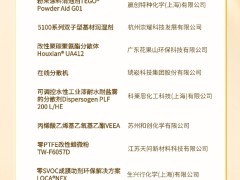据今日油价7月22日报道,在经历了一段时间的相对稳定后,美国原油基准WTI在每桶70美元上方交易了一个多月,交易员们现在正准备迎接油价在夏季剩余时间的狂飙。
《华尔街日报》收集的数据显示,原油期权市场的交易员预计,未来几周油价波动性将大幅上升,他们正在加大对冲力度,以防油价进一步下跌。越来越谨慎的态度表明,市场参与者正在权衡未来几个月欧佩克+增加石油供应的前景,以及在许多国家新冠肺炎病例激增之际,对全球石油需求复苏可能停滞的担忧。
市场参与者已经意识到,今年夏天石油需求的反弹不会将油价推高至每桶100美元,各处新冠肺炎病例的爆发将不可避免地打击市场人气。
大宗商品对冲基金Massar Capital Management的首席投资官Marwan Younes对《华尔街日报》表示:"市场将比人们预期的动荡得多。"
本周一开始,石油市场确实动荡不安。
欧佩克+最终在周日宣布了一项如何缓解减产的协议。但市场周一聚焦于对需求复苏的担忧,因Delta病毒感染激增,股市普遍抛售,且交易方式普遍在规避风险,避险情绪打击了油价,提振了美元。周一,美元走强进一步打压了油价。
因此,WTI原油价格下跌了7%,这是今年以来的最大单日跌幅,也是自2020年9月以来的最大单日跌幅。市场开始担心,不断上升的Delta病毒感染对经济和石油需求复苏意味着什么。如果一些国家,特别是接种率普遍较低的亚洲国家,再次对人口流动施加限制,这将减少燃料需求。
因此,石油市场波动性再度飙升,根据华尔街日报援引QuikStrike的数据显示,以期权合约价格为基础的下个月隐含波动率指标周一跳升至41.2%。
当然,很少有市场参与者预计,2020年4月的波动会重演,当时美国油价一天内暴跌至负值。为了解决这个问题,欧佩克+通过达成一项协议来解决这一问题,尽管它花了两周时间向市场保证不会很快出现新的价格战。
不过,华尔街日报引述QuikStrike数据显示,交易商正更多地通过所谓的风险逆转策略对冲油价下滑,以保护看涨期权。
市场和大多数分析人士普遍认为,欧佩克+协议对油价具有建设性意义,因为它消除了重新爆发价格战的可能性,即使这是一个漫长的协议。但市场参与者继续关注夏季淡季的利空消息,由于流动性降低,市场波动性加大。
欧佩克+协议为市场提供了更多的确定性,因此在理论上应该会减少波动性。不过,本周宏观和需求方面的担忧明显盖过了供应方面的进站。
许多国家,包括美国和英国等疫苗接种率高的国家的Delta病毒感染病例激增,以及周一在全球市场上引发的恐慌,突显出交易员目前在石油上押注所面临的挑战。
许多分析师认为,油价将回升至每桶70美元上方,高盛(Goldman Sachs)甚至预计油价将升至每桶80美元,而石油期权交易员已做好准备,迎接未来更大的需求波动和剧烈的价格波动。
王佳晶 摘译自 今日油价
原文如下:
Traders Brace For Major Oil Market Volatility This Summer
After a period of relative stability in the oil market where U.S. crude benchmark WTI was trading above $70 a barrel for more than a month, traders are now bracing for a wild ride for the rest of the summer.
Traders in the crude oil options market expect volatility to spike in the coming weeks and are hedging more against further price declines, data compiled by The Wall Street Journal showed. The increased caution suggests that market participants are weighing the prospect of rising oil supply from OPEC+ in the coming months against concerns about potential stalling of the global oil demand recovery amid the spike in COVID cases in many countries.
Market participants have come to realize that the rebound in oil demand this summer will not shoot oil prices up to $100 a barrel and that flare-ups in virus cases here and there would inevitably hit market sentiment.
“It’s going to be a lot more turbulent than people expected,” Marwan Younes, chief investment officer at commodity-focused hedge fund Massar Capital Management, told the Journal.
It was indeed turbulent at the start of this week in the oil market.
OPEC+ finally announced on Sunday a deal on how it would ease the production cuts. But the market focused on Monday on fears of demand recovery amid surging Delta variant infections in a broader sell-off in equity markets and a generally risk-averse trading approach. Risk aversion hit oil and lifted the U.S. dollar. The stronger dollar additionally weighed on oil prices on Monday.
As a result, WTI Crude prices plunged by 7 percent, the biggest one-day loss so far this year and the largest such loss since September 2020. The market started to fret about what the rising Delta variant infections would mean for economies and the oil demand recovery. If countries, especially those in Asia where vaccination rates are generally lower, were to impose restrictions on mobility again, this would reduce fuel demand.
So, volatility in the oil market spiked again, and a measure of implied volatility over the next month based on option contract prices jumped to 41.2 percent on Monday, according to data from QuikStrike cited by the Journal.
Sure, few market participants expect a repeat of the April 2020 volatility, when U.S. oil prices turned negative for a day. OPEC+ took care of that by sealing a deal—even if it took it two weeks—to reassure the market that there would not be a new price war coming soon.
Nevertheless, traders are hedging more against oil price slides via the so-called risk reversal strategy to protect their bullish call options with bearish put options, the QuikStrike data cited by the WSJ showed.
The market and most analysts generally believe that the OPEC+ agreement is constructive for oil prices as it removes the possibility—even if it was a remote one—of a renewed price war. But participants continue to be tuned to bearish news in the summer lull period, which, with lower liquidity, leads to higher volatility in markets.
The OPEC+ agreement “has provided more certainty for the market, and so in theory should reduce volatility. However, clearly this week, macro and demand concerns have overshadowed supply developments,” ING strategists Warren Patterson and Wenyu Yao said early on Wednesday.
The Delta variant surge in many countries—including in those with high vaccination rates such as the United States and the UK—and the jitters it caused on all global markets on Monday highlights the challenges traders face in betting on oil now.
Many analysts believe oil prices are set to return to above $70, with Goldman Sachs even expecting $80 oil, but oil option traders are getting ready for more volatility and wild price swings ahead.
免责声明:本网转载自其它媒体的文章,目的在于弘扬石化精神,传递更多石化信息,并不代表本网赞同其观点和对其真实性负责,在此我们谨向原作者和原媒体致以敬意。如果您认为本站文章侵犯了您的版权,请与我们联系,我们将第一时间删除。







